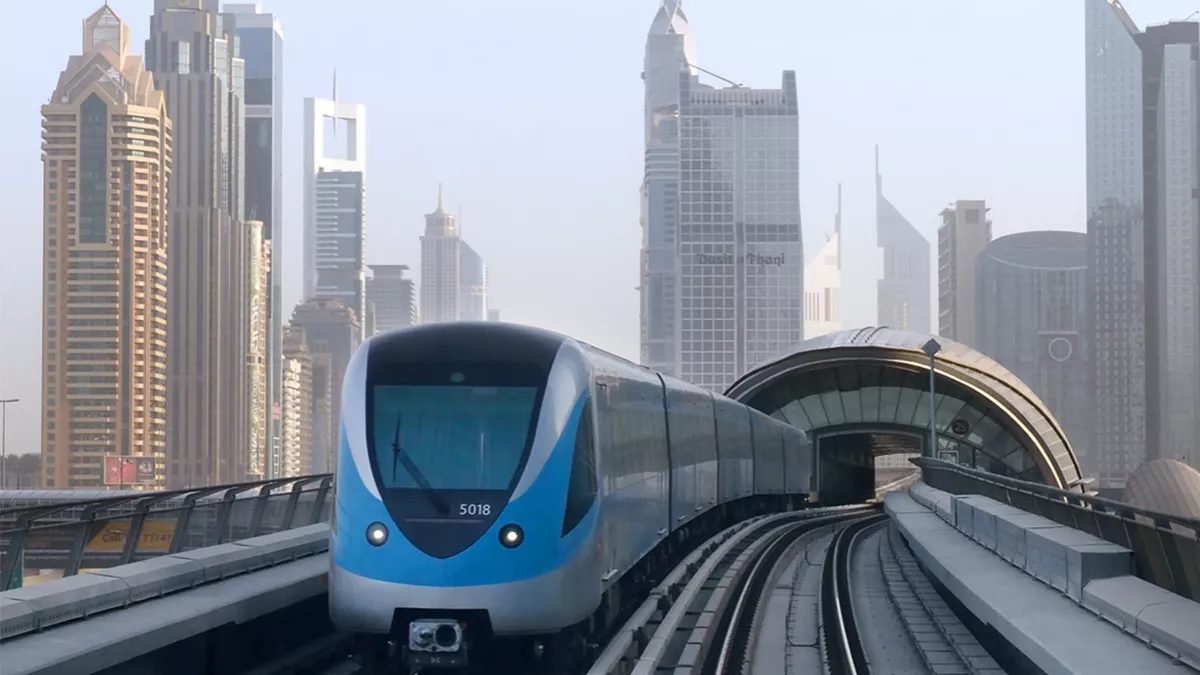Dubai Metro Blue Line: aims to create a '20-minute city wherein residents can access 80% of key services in less than 20 minutes
25 Nov 2023
News
Not only will the 30km Blue Line Dubai Metro expansion link important districts with growing regions and reduce travel times, but it will also provide commuters with breath-taking city vistas. The announcement was made on Friday. With an estimated completion date of 2029, the 1,300-meter viaduct supporting the elevated railway that links Al Jaddaf with Dubai Festival City and Dubai Creek Harbour will see trains traverse the historic Dubai Creek for the first time.
In addition, Blue Line will function as the primary point of integration for the current Red and Green Lines. It is a component of the Dubai 2040 Urban Master Plan, which attempts to develop a "20-minute city," a transit-oriented community in which inhabitants would be able to access 80% of the key services they require in less than 20 minutes.
The route, passenger capacity, journey duration, and service intervals between stations have all been made public by the Roads and Transport Authority (RTA).
Stations:
The Blue Line will be 30 km long in total, with 15.5 km being subterranean (down to a maximum depth of 70 metres) and 14.5 km being elevated rail. The new route will have 14 stations built in total: 9 elevated and 5 underground, including the largest underground interchange station in the metro system. It will be located in International City and span 44,000 square metres, with the capacity to handle 350,000 passengers per day. The interchange points will be located at Dubai International City Station 1, Creek Station on the Green Line, and Centerpoint Station on the Red Line.
According to Al Tayer, Blue Line would be distinguished by an impressive 8,800-square-meter station located at Dubai Creek Harbour. The world-famous company Skidmore, Owings and Merrill, which also created the Burj Khalifa, the Denver Union Railroad Station in Colorado, and the Sears Tower in Chicago, USA, is responsible for the building's unique architecture.
Service areas:
Nine important regions, including Mirdif, Al Warqa, International City 1 and 2, Dubai Silicon Oasis, Academic City, Ras Al Khor Industrial Area, Dubai Creek Harbour, and Dubai Festival City, will be connected to Dubai International Airport (DXB) via the Blue Line. RTA estimates that there will be a considerable 10 to 25-minute decrease in travel time by Blue Line between these destinations.
In keeping with the 2040 Urban Masterplan, Blue Line will also link the aforementioned nine areas to Dubai's five urban centres, which include the commercial and economic hubs of Sheikh Zayed Road, Downtown Dubai, Business Bay, Expo 2020 Centre, and Dubai Silicon Oasis Centre; the historic districts of Deira and Bur Dubai; and the tourism hubs of Dubai Marina and JBR.
Approximately one million residents who live in the areas served by Blue Line would immediately benefit from the project, according to Mattar Al Tayer, director-general of RTA and chairman of the board of executive directors.
Routes:
Al Tayer claims that there will be two primary routes for the Dubai Metro Blue Line. The first route starts at Al Jaddaf at the Creek Interchange Station on the Green Line. Following that, it travels via Ras Al Khor, Dubai Festival City, and Dubai Creek Harbour before arriving at Dubai International City 1, which is equipped with an interchange station. The path keeps going up to the Academic City and Dubai Silicon Oasis before reaching Dubai International Cities 2 and 3. There are ten stops over the 21 km length of this stretch.
The Blue Line's second route begins at the Red Line's Centrepoint Interchange Station in Al Rashidiya. It will end at Dubai International City 1 Interchange Station after passing through Al Warqaa and Mirdif. There are four stops throughout this 9-kilometer course. At Al Ruwayyah 3, a metro depot will also be there.
Cost and Benefits:
The construction of Dubai's newest public transit project is expected to cost Dh18 billion. With the construction of the Blue Line, Dubai's railway network will reach 131 kilometres, with 168 trains and 78 stops.
According to preliminary RTA assessments, the project would save as much as Dh56.5 billion in fuel and time savings, fewer accident-related deaths, and lower carbon emissions by 2040. In addition to facilitating travel, the Blue Line is expected to increase the value of real estate by up to 25%, which is in line with the objectives of the Dubai Economic Agenda.
The metro line will also result in a 20% reduction in traffic congestion on the routes it serves.
Passenger capacity:
At a service frequency of around 1.5 minutes, the Blue Line is intended to carry an estimated 56,000 people per hour in both directions.
The Blue Line is expected to be used by 50,000 university students from Academic City by 2029. It is anticipated that the Blue Line would carry around 200,000 people per day by 2030, and 320,000 passengers per day by 2040.
Contractors, joint ventures and consortiums have had until Friday, November 24 to submit their bids for the Blue Line. While tunnel digging to build an underground corridor for the Blue Line will begin in 2025, the project awarding announcement will take place the following year.
The Dubai Metro formally launched on September 9, 2009, and is scheduled to celebrate its 20th anniversary in 2029. A trial operation is anticipated to take place in 2028.
